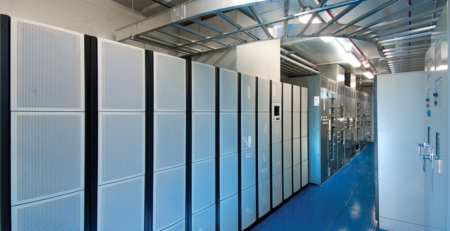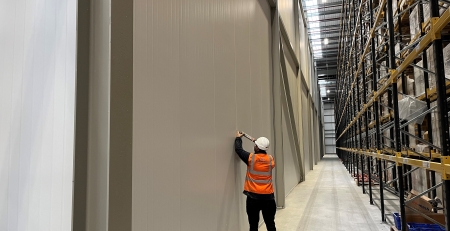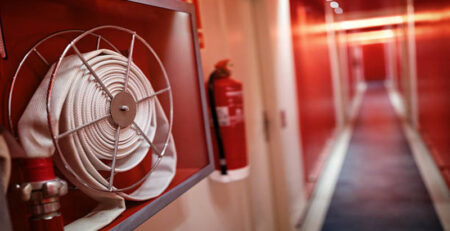The Hidden Dangers Above: Why Cold Store Ceiling Safety Matters
In the food and logistics industries, cold storage facilities are essential for maintaining product integrity and ensuring compliance with safety regulations. However, recent findings by the Health and Safety Executive (HSE) have highlighted significant risks associated with cold store ceilings, reinforcing the need for proactive inspection and maintenance.
Cold store ceilings, particularly those in older or poorly maintained facilities, pose serious structural risks. These ceilings are often suspended systems reliant on brackets, hangers, or tension systems, many of which have been exposed to years of thermal stress, moisture, and potential corrosion. If these systems fail, the consequences can be catastrophic, ranging from severe workplace injuries to significant financial losses due to facility shutdowns.
The recent HSE bulletin underscores the urgency of assessing the integrity of cold store ceiling structures. In some reported cases, failures have led to large ceiling panels collapsing, putting workers at risk and disrupting supply chains. In high-risk environments where food safety and temperature control are paramount, any ceiling failure could compromise product quality and regulatory compliance.
Several factors contribute to the deterioration of cold store ceilings, including:
1. Moisture ingress: Over time, insulation materials can absorb moisture, adding weight and reducing the structural integrity of the ceiling panels.
2. Thermal cycling: The constant freezing and thawing of surrounding materials can cause expansion and contraction, weakening connections and fasteners.
3. Corrosion and material fatigue: Older ceiling systems, particularly those with metal supports, may be prone to rust and weakening, exacerbated by condensation and chemical exposure.
4. Poor installation and maintenance: Many failures stem from improper initial installation or inadequate routine inspections and servicing.
To mitigate these risks, facility operators should implement a structured approach to ceiling safety:
A. Regular inspections to identify early signs of wear, corrosion, or movement, such as sagging panels, visible rust, or loose fixtures.
B. Professional engineering reviews to assess long-term stability and recommend necessary reinforcements.
C. Upgrading suspension systems to modern, corrosion-resistant alternatives to prevent moisture and stress damage.
D. Establishing a planned preventative maintenance (PPM) schedule to ensure proactive repairs rather than reactive fixes after an issue arises.
E. Developing an emergency response plan to ensure worker safety and minimise downtime in the event of a ceiling failure.
Business leaders must ensure their cold storage facilities not only meet compliance requirements but also exceed safety expectations. The cost of inaction is too high—both in terms of human safety and financial implications. At Ambrey Baker Construction, we specialise in designing, assessing, and reinforcing critical infrastructure in the food and logistics sectors. Our expertise ensures that facilities remain operational, safe, and compliant with the latest industry standards. If your cold store ceiling hasn’t been reviewed recently, now is the time to act.
The HSE bulletin serves as a stark reminder that cold store ceiling safety cannot be overlooked. Proactive assessment and maintenance are essential to protecting workers, preserving assets, and maintaining compliance. Investing in structural integrity today prevents costly failures tomorrow.










